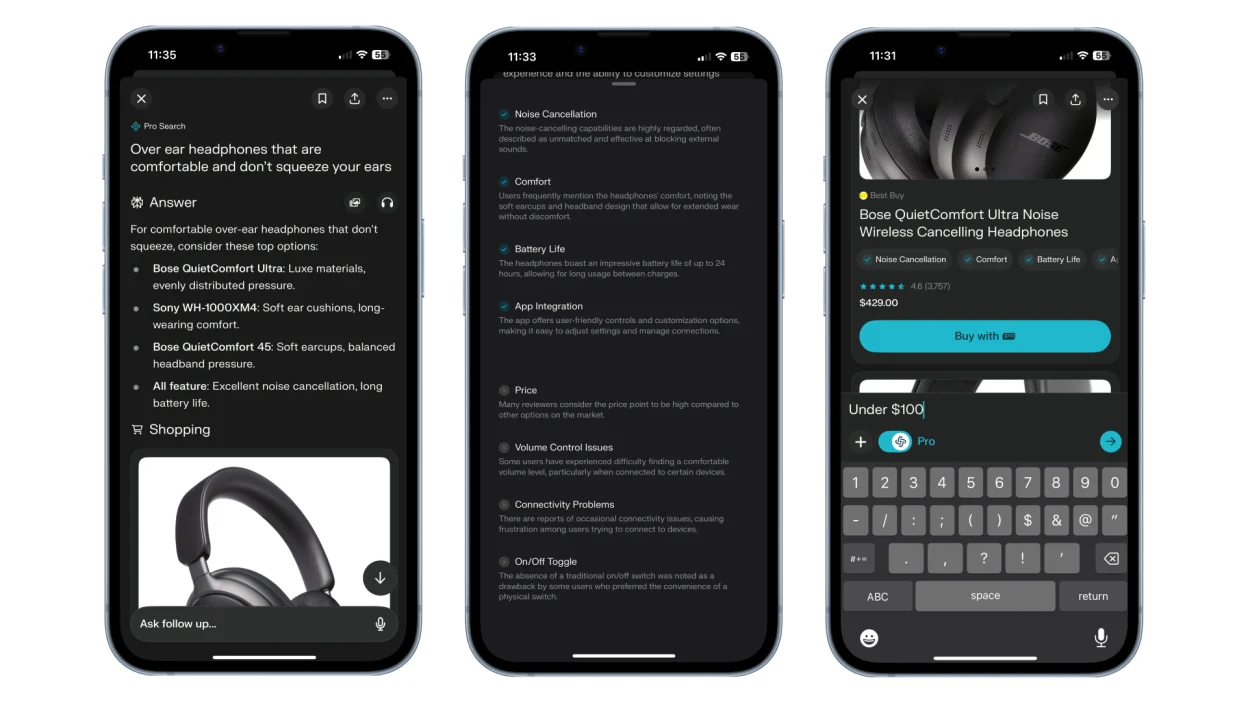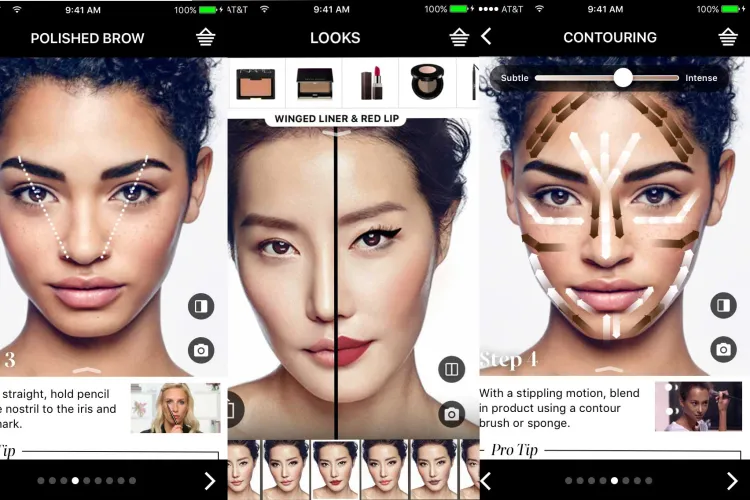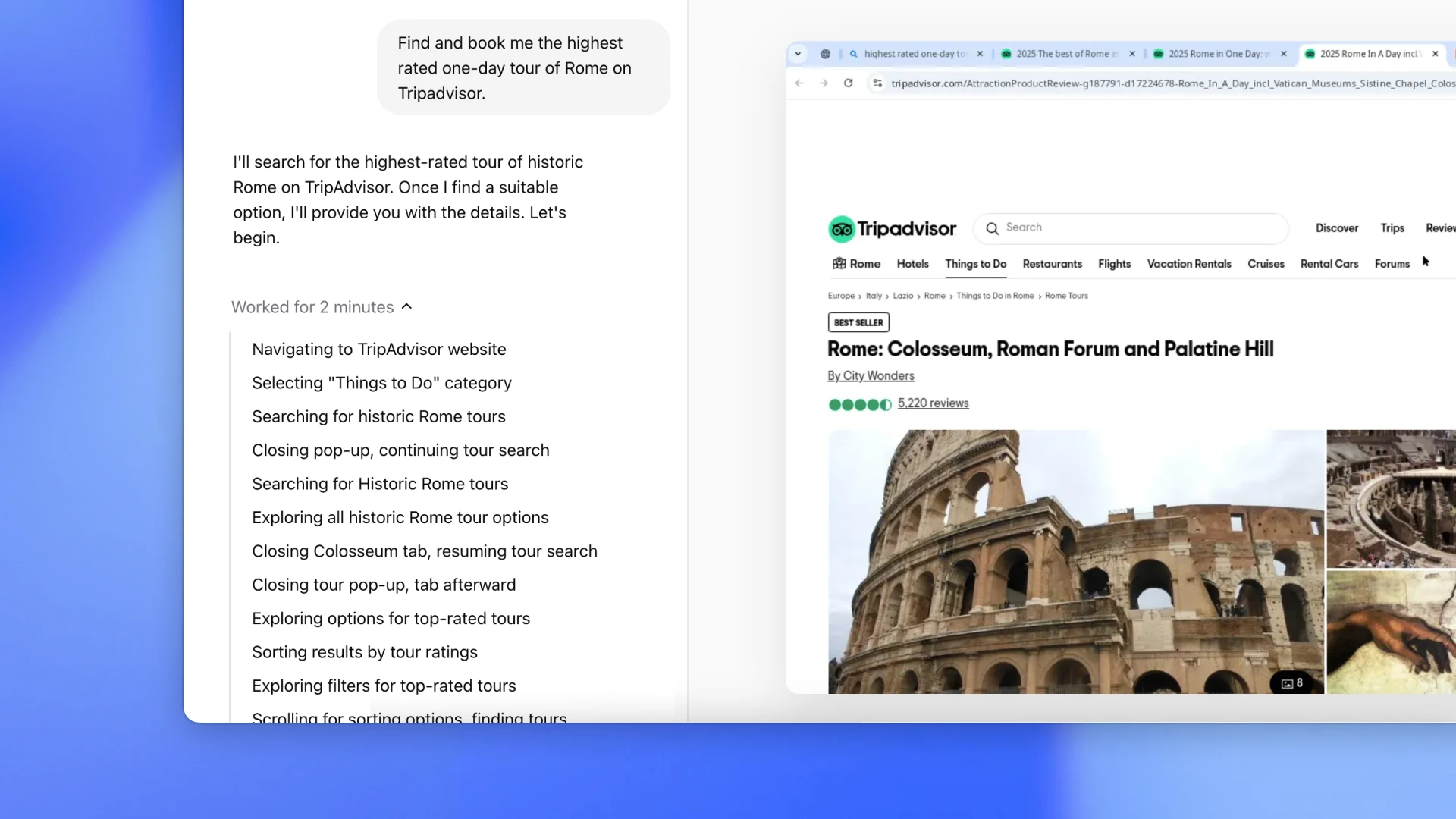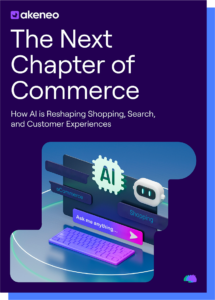Learn how brands like Perplexity, Sephora, OpenAI, and Amazon are leveraging AI to reshape the customer journey—from intent-based search and virtual try-ons to intelligent agents and personalized shopping assistants. See how AI, powered by clean product data, is helping businesses drive engagement, boost efficiency, and stay competitive in a rapidly evolving digital marketplace.

Keywords
Once upon a time, searching online meant typing in keywords and hoping for the best—now, AI search engines practically finish your thoughts for you. (Creepy? Maybe. Convenient? Absolutely.)
From intent-driven engines that cut through the clutter faster than you can say “page two of search results,” to AI assistants delivering real-time, personalized recommendations—AI isn’t some distant promise. It’s already transforming how customers discover, decide, and buy, turning what once felt like science fiction into standard practice for brands leading the digital charge.
But how are businesses actually putting this powerful tool to work? We’ll dive into a few real-world examples, but first let’s take a moment to define what we really mean by “AI” in the context of customer experience—and why it matters now more than ever.
Forget the movies you’ve seen—artificial intelligence (AI) isn’t about robots taking over the world. It’s about machines getting smart enough to understand what we want, when we want it.
At its core, Artificial Intelligence refers to the development of computer systems that can perform tasks that typically require human intelligence. These tasks include problem-solving, learning, understanding natural language, and even recognizing patterns. From personalized recommendations to automated chat support, AI is what’s quietly powering many of the experiences customers now expect as standard.
For a long time (and still sometimes now), it can feel like AI is just a buzzword that businesses use to make themselves sound innovative. But if utilized correctly, AI can be the engine that quietly drives a new standard of convenience and personalization - and it’s not just consumers benefiting from this shift.
Many brands are leaning into AI in a real way to stay ahead in a fast-moving, customer-first world. In fact, 45% of brands are already using AI in their marketing efforts, tapping into its ability to scale personalization, streamline operations, and accelerate smarter decision-making.
From boosting efficiency behind the scenes to enhancing the front-end experience, AI enables businesses to work smarter and serve customers more intuitively.
So, what does this look like in practice? We all know about the AI chatbots that are now available on every website, but AI can also be utilized to deliver hyper-relevant product recommendations, optimize search experiences, and even predict what customers might need next. Whether it’s enhancing customer journeys or fine-tuning logistics, AI is showing up in ways that make shopping faster and smoother!
Now for the fun part—real-world proof. Here’s how smart businesses are using AI to rewrite the rules of customer experience:
Our first case study is the AI-powered search engine Perplexity, which launched "Shop Like a Pro" in November 2024—a feature that allows users to search for products, receive tailored recommendations, and make purchases directly within the platform. It blends product discovery, smart recommendations, and a frictionless checkout into one smooth, all-in-one shopping experience.
By analyzing user queries, preferences, and behaviors, Perplexity delivers personalized product recommendations in a conversational, easy-to-digest format. Product cards display key details at a glance, giving shoppers the info they need without the hassle. And with the “Buy with Pro” feature, users can complete their purchases instantly—no more jumping between tabs or navigating a maze of websites!

Perplexity’s ‘Shop Like a Pro’ marks a shift toward intent-based search and zero-click purchasing. Instead of requiring consumers to sift through search results and visit different retailers' sites, Perplexity refines this process, ensuring that shoppers can find and purchase a product within a single, intuitive interaction. For retailers, this raises the stakes: product data needs to be accurate, enriched, and AI-ready to meet shoppers where they are. As platforms like Perplexity blur the lines between search, recommendation, and purchase, businesses that embrace this shift will be the ones leading instead of lagging in the next era of eCommerce.
While Perplexity is redefining how we search and shop in one seamless step, other brands are using AI in entirely different ways. Take Sephora, for example—the beauty and skincare giant has been blending AI and Augmented Reality (AR) into its shopping experience for years, offering customers innovative tools that elevate both personalization and convenience.
One of Sephora's notable innovations is the Sephora Virtual Artist, developed in collaboration with ModiFace, which allows users to virtually try on thousands of lip shades through their mobile app. By utilizing facial recognition technology, the app accurately maps facial features, enabling users to see how different products would look on them without physical application. Within two years of its launch, the Virtual Artist recorded over 200 million shade trials and attracted more than 8.5 million visits.

Building upon this, Sephora introduced Color Match, an extension of the Virtual Artist. This feature assists customers in shade-matching by analyzing images to find corresponding lipstick colors from Sephora's extensive product range. Users can upload a photo, and the AI identifies prominent colors, providing a list of matching lipsticks that can be virtually tried on and purchased directly through the app.
The core technology behind these tools includes advanced facial recognition, which accurately tracks facial features to apply virtual makeup precisely, and AI that analyzes users' skin tones and leverages data such as customer preferences and purchase history to offer personalized product recommendations.
But Sephora didn’t stop there. They also put AI to work behind the scenes to boost SEO and customer outreach. Noticing a rise in detailed product searches, they used AI to whip up landing pages designed around queries like “best foundation for sensitive skin”, which resulted in smart, hyper-relevant content that clicked with customers - and a 6% increase in organic search visibility to prove it!
Sephora’s AI-driven innovations show just how much tech can elevate the everyday shopping experience, making it smarter, more personal, and a lot more engaging. These tools don’t just boost convenience for customers; they also fuel stronger engagement and higher conversions for the brand.
When talking about AI, how could we possibly forget OpenAI? The team behind ChatGPT recently introduced Operator, an autonomous AI agent designed to tackle a wide range of web-based tasks, from filling out forms and booking flights to ordering groceries and booking reservations. Users simply describe the task, and Operator gets to work in its browser environment. At any point, users can take over control, especially for actions requiring sensitive information like login credentials or payment details. This innovation contributes to OpenAI’s impressive growth, with weekly active users surging by 33% since December 2024, reaching 400 million globally.
Customization is where things get really interesting. Operator lets users set preferences for specific websites, like always choosing aisle seats when booking flights or automatically reordering the oat milk that somehow disappears faster every week. Additionally, Operator allows for multitasking by running multiple tasks simultaneously in separate conversations, akin to using multiple tabs in a web browser.

While still in its early days (and not immune to the occasional stumble on a complex web interface), Operator represents a shift in how we as consumers interact with the internet and how businesses need to think about being discovered. As autonomous shopping agents become more common, it’s no longer just about appealing to human shoppers, and unlike human shoppers, AI agents rely on structured, machine-readable data to identify product attributes, compare options, and make decisions. If your listings are vague, inconsistent, or missing key attributes, you risk being invisible and overlooked by AI shopping assistants, ultimately missing out on a growing wave of automated purchases.
Ever wanted your own personal shopping assistant? Well, now you’ve got one. And no, it’s not Alexa.
Trained on Amazon’s vast product catalog and supplemented with information from across the web, Rufus acts as an intelligent shopping assistant that provides real-time answers, product comparisons, and tailored recommendations. Rufus allows consumers to interact conversationally—whether you’re asking “what to consider when buying running shoes?” or getting oddly specific with “is this cordless drill easy to hold?”, Rufus is ready. Since launch, it’s handled tens of millions of customer queries, proving just how eager shoppers are for smarter, quicker help. By integrating this assistance directly into the Amazon shopping journey, Rufus helps reduce friction and guide customers toward faster, more confident decisions.

But the impact goes beyond the cart. AI assistants like Rufus are also changing the game for sellers. Amazon is already putting generative AI to work, helping brands create more engaging and informative product listings by enhancing titles and descriptions to better capture consumer interest and improve discoverability.
And then there’s Fit Review Highlights—a feature that offers personalized size guidance and insights so customers can determine which size will fit them best. When you have 58% of consumers saying that sizing was the #1 reason for a product return, you can’t help but see how an AI-powered feature like this can help boost conversion rates and reduce return rates.
These four brands (Perplexity, Sephora, OpenAI, and Amazon) are just a few examples of businesses putting AI to work in their own uniquely brilliant ways. The methods may differ, but the mission is the same: to make shopping (and searching, and browsing) faster, smarter, and way less frustrating. In a world where expectations are rising faster than your screen time, these brands are proving that smart tech and smarter data is the way forward.
Believe it or not, in the world of AI-powered shopping, messy or incomplete product data is enough to ruin the entire customer experience—no matter how advanced the tech behind it. If AI doesn’t have the right information to work with, it can’t recommend accurately, answer questions, or even surface your products in the first place!
That’s where a Product Information Management (PIM) system comes in. It helps brands centralize, organize, and enrich their product content—ensuring every attribute, description, and spec is accurate and AI-ready across all channels. With AI tools like chatbots, search engines, and virtual assistants relying on structured data to make recommendations or answer queries, a strong PIM foundation isn’t just helpful—it’s essential. The better your data, the better these tools can represent your products, guide customers to the right choice, and ultimately drive conversions. AI can only be as intelligent as the product content behind it!
From Perplexity’s zero-click shopping and Sephora’s virtual beauty tools to OpenAI’s Operator and Amazon’s Rufus, brands are already showing us what’s possible when AI meets customer experience. These innovations are setting new expectations for speed, personalization, and convenience across the board.
For brands looking to stay competitive, the message is clear: embracing AI is essential, but smart technology needs smart data. Investing in structured and enriched product information is the first step to unlocking the full potential of AI and delivering the kind of customer experiences today’s consumers expect.
Discover how AI is transforming shopping, search, and product experiences, and why clean, structured data is the key to staying competitive in the next era of commerce.


Explore how PCM helps brands centralize and enrich product data, streamline workflows, and improve content delivery across channels, and gain a...
Read more
2025 Amazon Prime Day has officially been announced for July 8-11; if you’re a brand looking to take full advantage of one of the biggest sales...
Read more
Explore how these 2025 Experience Award winners elevated product experiences by centralizing data, automating workflows, scaling globally, and...
Read more